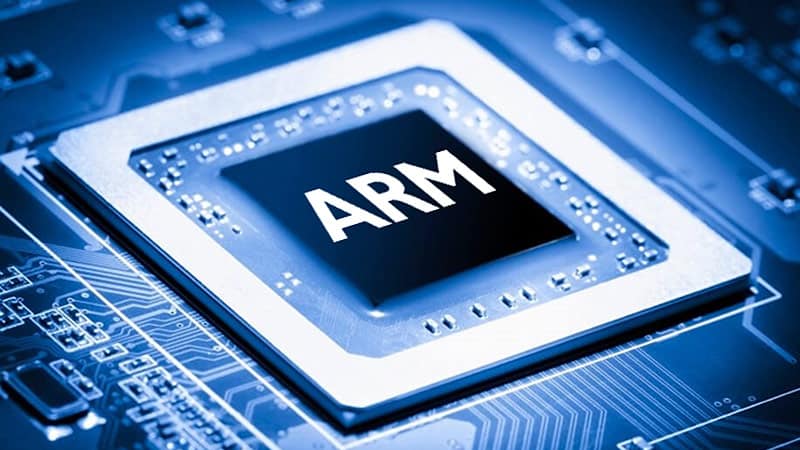It’s about time we got to the bottom of the burning question: What is an ARM processor?
In this tech-savvy age, ARM processors are ubiquitous, powering devices from smartphones to IoT gadgets. But what exactly are they, and why are they so darn popular?
Buckle up, as we take you on a whirlwind tour of the ARM architecture, its applications, and why it’s shaping the future of computing.
Before we dive headfirst into the nitty-gritty, let’s get acquainted with the basics.
What is an ARM processor?
ARM, or Advanced RISC Machine, is a family of processor architectures known for their power efficiency and performance.
Developed by ARM Holdings (now owned by Nvidia), these processors are licensed to tech giants like Apple, Samsung, and Qualcomm, who tailor them to their needs.
In other words, it is a family of microprocessors that use the ARM architecture, which is a Reduced Instruction Set Computing (RISC) design.
These processors are known for their power efficiency and have become the dominant choice for various applications, including smartphones, tablets, and Internet of Things (IoT) devices.
Key Takeaways
- ARM stands for Advanced RISC Machine.
- ARM processors are based on a RISC design, emphasizing simplicity and efficiency
- ARM architecture includes unique instruction sets, offering flexibility for various applications
- Components of ARM processors include registers, ALU, and memory system
- ARM processor families include Cortex-A (high-performance), Cortex-R (real-time applications), and Cortex-M (low-power, cost-sensitive applications)
- Key advantages of ARM processors include power efficiency, customization, and scalability
- ARM processors are used in a wide range of applications, such as smartphones, tablets, IoT devices, embedded systems, and servers
- ARM processors have become the dominant choice in many industries due to their flexibility and customization options.
Dissecting ARM Architecture
You might be scratching your head, wondering what sets ARM processors apart from their counterparts. The secret lies in their architecture, which comprises three key elements:
- RISC Design: Reduced Instruction Set Computing (RISC) is a design philosophy that simplifies processor instructions, resulting in faster execution and improved power efficiency. It’s the backbone of ARM architecture.
- Load-Store Model: ARM processors use a load-store model, meaning data manipulation operations are performed only on data stored in registers, and not directly in memory. This approach further speeds up execution.
- Pipelining: To maximize performance, ARM processors use pipelining, a technique that breaks down instructions into smaller stages and processes them concurrently. It’s like an assembly line for your CPU!
Where You’ll Find ARM Processors
The question isn’t “Where can you find ARM processors?” but rather, “Where can’t you find them?” Their versatility and efficiency have made them the heart of a wide array of gadgets:
- Smartphones and Tablets: It’s no secret that ARM processors dominate the mobile market, with giants like Apple and Samsung singing their praises.
- Laptops: The rise of ARM-based laptops, like Apple’s M1 MacBook, is a testament to the potential of these chips in the personal computing space.
- IoT Devices: From smart thermostats to fitness trackers, ARM processors are the driving force behind the Internet of Things.
- Automotive Systems: Even cars are getting in on the ARM action, with processors powering infotainment systems, navigation, and more.
What are Arm processor features?
Arm processors have a smaller instruction set, which means they require less transistors. This results in a smaller die size for the integrated circuits, which is a positive thing.
They are appropriate for progressively downsized electronics due to their smaller size, reduced complexity, and lower power consumption.
The following is a list of features offered by Arm processors:
- Load/store architecture
- Integrated security
- Orthogonal instruction set
- Single-cycle execution
- Energy efficiency
- 64- and 32-bit execution states
- Hardware virtualization support
The streamlined architecture of Arm processors enables them to perform more effectively across several cores and makes it simpler for developers to write code.
Arm processors can sometimes outperform Intel processors in terms of performance for programs that are compatible with both architectures, despite the fact that Arm processors do not offer the same raw computation throughput as Intel CPUs.
History of ARM
Origins
The roots of ARM processors trace back to the 1980s when British computer manufacturer Acorn Computers began developing its own RISC-based processor.
The project was eventually spun off into a separate company called ARM Ltd., which was founded in 1990 as a joint venture between Acorn, Apple, and VLSI Technology.
Evolution
Since then, ARM has evolved and expanded, with its architecture licensed to numerous companies worldwide. Today, ARM processors are designed by various companies, including Apple, Samsung, and Qualcomm, among others, which customize the architecture for their specific needs.
ARM Architecture
 RISC Design
RISC Design
The ARM architecture is based on the RISC design, which emphasizes simplicity and efficiency. RISC processors use a smaller set of simple instructions, allowing them to execute more instructions per clock cycle compared to their Complex Instruction Set Computing (CISC) counterparts.
Instruction Set
ARM processors use a unique instruction set that includes both 32-bit and 64-bit instructions, with some processors also supporting a 16-bit instruction set for improved code density.
This flexibility allows ARM processors to be used in a wide range of applications, from low-power embedded systems to high-performance servers.
Components of ARM
Registers
ARM processors have a set of registers that store data for use during execution.
These registers include general-purpose registers, which can store any type of data, and special-purpose registers, which serve specific functions like program counters and stack pointers.
ALU
The Arithmetic Logic Unit (ALU) is the core component of an ARM processor, responsible for executing arithmetic and logic operations.
The ALU works in tandem with the registers to process data efficiently.
Memory System
ARM processors use a memory system that includes both on-chip memory and off-chip memory interfaces.
The memory system is designed to provide fast and efficient access to data, ensuring optimal performance.
ARM Processor Families
ARM processors are grouped into families based on their performance and features. Some popular ARM processor families include Cortex-A, Cortex-R, and Cortex-M.
- Cortex-A: These processors are designed for high-performance applications such as smartphones, tablets, and laptops. They offer advanced features like hardware virtualization, out-of-order execution, and multicore configurations.
- Cortex-R: The Cortex-R family is optimized for real-time applications, offering low-latency response times and high reliability. These processors are typically found in automotive, industrial, and medical devices.
- Cortex-M: Cortex-M processors are designed for low-power, cost-sensitive applications like microcontrollers and IoT devices. They feature a small footprint, low power consumption, and an efficient instruction set.
Advantages of ARM
ARM’s power-efficient architecture has several advantages that make it the go-to choice for modern devices:
Longer Battery Life
ARM processors sip power like it’s fine wine, giving your devices more juice to last the day.
Emits Less heat.
Reduced power consumption means less heat generation, keeping your gadgets from turning into pocket-sized infernos.
Power Efficiency
ARM processors are known for their power efficiency, making them an ideal choice for battery-powered devices. The RISC design allows ARM processors to execute more instructions per clock cycle, which helps reduce power consumption without sacrificing performance.
Customization
ARM licenses its architecture to various companies, allowing them to customize the processor design to meet their specific needs. This flexibility has led to a wide range of ARM-based processors, each with unique features and optimizations.
Scalability
The ARM architecture is highly scalable, which means it can be easily adapted for different performance levels and applications. This scalability enables companies to develop a range of products based on a single architecture, simplifying software development and reducing costs.
Portability
ARM chips are compact and lightweight, making them perfect for slim and portable devices.
Applications of ARM
ARM processors are used in a variety of applications, including:
- Smartphones and tablets: Due to their power efficiency, ARM processors are the preferred choice for mobile devices like smartphones and tablets.
- IoT devices: ARM processors are also popular in IoT devices, where low power consumption and cost are critical factors.
- Embedded systems: The ARM architecture is used in many embedded systems, including automotive electronics, industrial control systems, and medical devices.
- Servers: ARM processors are increasingly being used in servers, offering power-efficient alternatives to traditional x86-based server processors.
In conclusion, ARM processors are a family of microprocessors based on the ARM architecture, which is a RISC design known for its power efficiency and scalability.
ARM processors are used in a wide range of applications, from smartphones and tablets to IoT devices and servers. Their flexibility and customization options have made them the dominant choice in many industries, driving innovation and growth in the technology sector.
Must see: All Technology Terms and Definitions
FAQs
As we near the end of our ARM adventure, let’s address some frequently asked questions about these marvelous chips:
What does ARM stand for?
ARM stands for Advanced RISC Machine.
What is the difference between ARM and x86 processors?
ARM processors use a RISC design, emphasizing simplicity and efficiency, while x86 processors use a CISC design, which features a more complex instruction set. ARM processors are generally more power-efficient than x86 processors.
Can ARM processors run Windows?
Yes, ARM processors can run Windows, but they require a specific version called Windows 10 on ARM, which is designed for ARM-based devices.
Are ARM processors only used in mobile devices?
No, ARM processors are used in a wide range of applications, including IoT devices, embedded systems, and servers, in addition to mobile devices.
Why are ARM processors so power-efficient?
ARM processors are power-efficient due to their RISC design, which allows them to execute more instructions per clock cycle, reducing power consumption without sacrificing performance.
What is the difference between ARM and x86 processors?
ARM processors use a RISC-based architecture, while x86 processors, such as those from Intel and AMD, employ a Complex Instruction Set Computing (CISC) design. In a nutshell, ARM processors prioritize power efficiency and simplified instructions, while x86 chips focus on a broader instruction set and raw performance.
Are ARM processors better than Intel processors?
It’s not as simple as declaring one better than the other. ARM processors excel in power efficiency and are well-suited for mobile devices, while Intel processors offer higher performance for demanding tasks, making them better suited for desktops and high-performance laptops.
Can ARM processors run traditional desktop applications?
Yes, but with a catch. ARM-based devices running Windows on ARM can run traditional desktop applications through emulation or compatibility layers, like the Windows Subsystem for Linux (WSL). However, this may result in reduced performance compared to running the same applications on x86 processors.
Wrapping Up
So, what is an ARM processor? It’s a groundbreaking piece of technology that’s changing the game in the world of computing.
ARM’s power-efficient architecture and versatile applications have made it a formidable force, driving innovation in smartphones, laptops, IoT devices, and more.
As we move toward an increasingly connected world, the importance of ARM processors will only continue to grow.
They may not be a one-size-fits-all solution, but their impact on the technology landscape is undeniable. The next time you reach for your smartphone or fire up your IoT device, take a moment to appreciate the mighty ARM processor working tirelessly behind the scenes.
Click the button below to Gain Access to our Members’ Exclusive Group, before it fills up again.
Gain Access Now!
See what others are reading:









